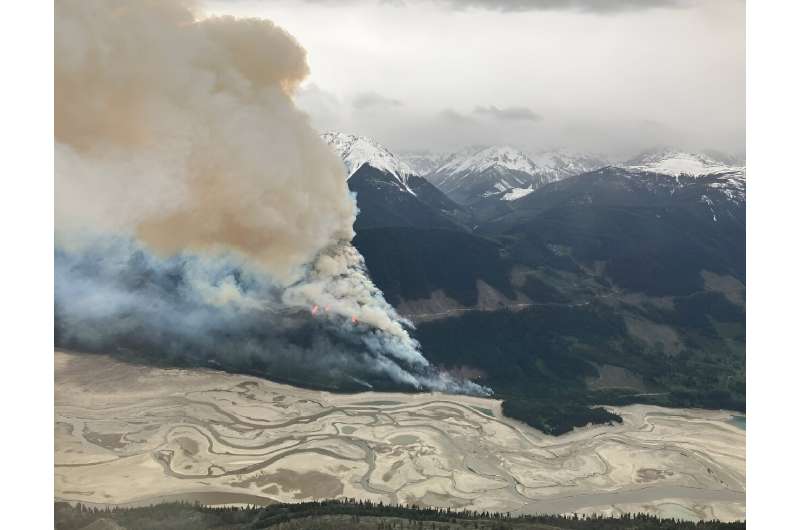This article has been reviewed according to Science X's editorial process and policies. Editors have highlighted the following attributes while ensuring the content's credibility:
fact-checked
reputable news agency
proofread
Rain, cooling slow huge blaze in Canada's Jasper park

Rain and cooler temperatures are helping firefighters battling a huge forest fire that has devastated part of the popular tourist town of Jasper in western Canada, authorities said Friday.
The blaze has ravaged a large section of Jasper National Park—Canada's largest—which is famed for its scenic mountains, lakes, waterfalls and glaciers, drawing some 2.5 million visitors a year.
The fire has so far caused no casualties, although as many as 25,000 residents and tourists were forced to evacuate quickly starting late Monday as the conflagration suddenly spread.
Still described as out of control early Friday, the blaze has destroyed more than 36,000 hectares (90,000 acres) of land, including 30 to 50 percent of the town of Jasper.
"There is no denying that this is the worst nightmare for any community," said Danielle Smith, Alberta province's premier.
'Heartbreaking' damage
Rain and cooler temperatures in the national park will likely "keep fire behavior low for the next 72 hours," said Parks Canada, which oversees the country's national parks and coordinates firefighting efforts.
Canada has mobilized troops to help its overtaxed fire crews, and has turned abroad, requesting a total 400 foreign firefighters from Australia, New Zealand, Mexico and South Africa.
The fire entered a by-then deserted Jasper on Wednesday evening, fanned by strong winds in a region hit by severe drought and record heat in recent days. Firefighters were still working in the town on Thursday.
A video circulating on social media showed the city's streets covered in ash, with cars turned to charred carcasses and buildings reduced to rubble—images Prime Minister Justin Trudeau called "heartbreaking."
'Feeling of devastation'
The fire was started by lightning strikes Monday, said Parks Canada, adding that fast-moving flames had reached a height of up to 120 meters (390 feet).
Powerful wind gusts Wednesday saw the ferocious blaze advance by five kilometers (three miles) in less than 30 minutes, said Mike Ellis, minister of public security for Alberta province.
The authorities have said it could take several weeks to completely subdue the blaze.
Lightning strikes have ignited several other forest fires across western Canada, amid drought and high temperatures.
In all, there are 170 active fires in Alberta, authorities said.
Neighboring British Columbia province has also been hard-hit, with 400 active blazes, half of them still out of control.
Fifty-six new fires have been counted there just in the past 24 hours.
Climate change has left Canada increasingly vulnerable to extreme weather events.
There are growing fears of a repeat of 2023, the country's worst fire year in history, when 15 million hectares were burned and more than 200,000 people had to evacuate.
The Jasper fire forced some residents to flee hundreds of kilometers in search of shelter.
One Jasper resident, who had driven hours to escape the advancing flames, told AFP: "Everyone has a total feeling of devastation. Many people are feeling very helpless. Because there's nothing that we can do."
© 2024 AFP




















